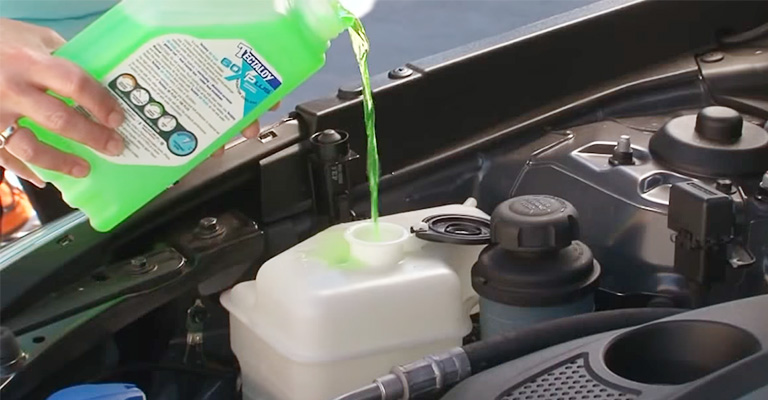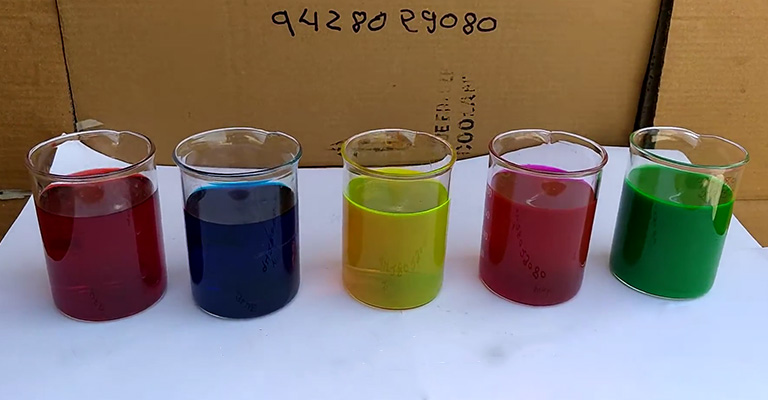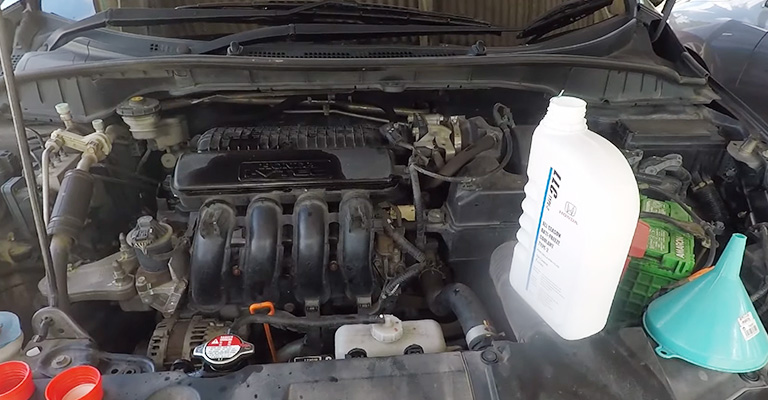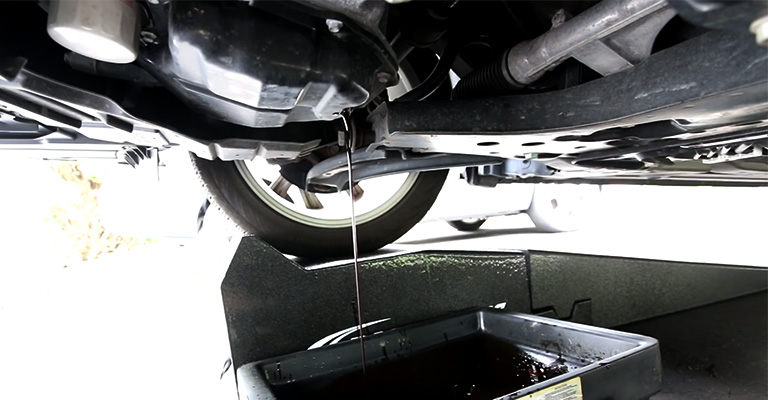Coolant is a vital component of a car’s cooling system. And it’s important to make sure it is the correct type and not mixed with any other type. Otherwise, it can cause a major malfunction.
But can you mix blue and green coolant? The answer is YES. Blue and green coolants can be mixed together.
You can mix your old green with the new blue. It’s something Honda technicians do all the time. I drain my radiator and block, then fill the entire system with the blue coolant in my own car. It’s just me, though.
Both the coolants are ethylene glycol-based coolants. So they are compatible with each other and will not cause any damage to the engine.

However, it is important to note that mixing coolants of different colors should be done with caution. So, it’s not just a simple yes or no. It’s a bit more complicated than that. But let me make it easier for you-
What is Green Coolant?

This type of coolant also helps to reduce engine corrosion and prevent the buildup of sludge and deposits.
It is a combination of water, glycol, and an organic acid. The organic acid used in it helps reduce the number of volatile organic compounds (VOCs) released into the atmosphere.
Green coolant also has several advantages over traditional coolants. It has a lower boiling point.
That can cool a vehicle or machine more quickly, and it is also less corrosive. This means that green coolant can help prolong the life of the cooling system and reduce the amount of maintenance needed over time.
They are also becoming more widely available. Thus, it became a viable option for anyone looking for an environmentally friendly way to keep their vehicle running smoothly.
What is Blue Coolant?

Blue coolant is a type of antifreeze that helps keep your engine cool and prevents it from freezing or boiling over.
It works by keeping the temperature of the coolant within a certain range, no matter the outside temperature.
It is usually made up of a mixture of glycol and water. This combination allows the coolant to remain liquid even when the outside temperature drops below freezing.
It also helps to prevent rust, corrosion, and other damage to the engine caused by heat.
Blue coolant is used in many vehicles and is a great choice for keeping your engine running smoothly in all climates. It helps to keep your engine cooler in hot weather and prevents it from freezing in cold conditions.
Can You Mix Blue and Green Coolant?
The two most common types of coolants are green and blue. These are designed to be kept separate.
However, if you’re wondering whether you can mix blue and green coolant or not, the answer is yes, you can. Blue and green coolants can be mixed since both coolants are ethylene glycol-based.
These are compatible with one another and will not harm the engine. Moreover, there are certain situations where it can be beneficial to mix them, which we’ll discuss in a while.
Can You Randomly Mix Different Colored Coolants?

While the traditional green coolant is the most commonly seen, there are a variety of other colors, each with specific properties and benefits. This begs the question, can you randomly mix different colored coolants?
The short answer is NO. Different colors of coolant represent different chemical formulations. The different colors are used to indicate which type of coolant should be used in a vehicle.
Mixing different colored coolants can cause damage to your engine, as the mixture may be incompatible with the materials used in your engine.
Moreover, using the wrong type of coolant can cause corrosion to the parts of your engine, leading to costly repairs. Additionally, different colors of coolant are designed for different temperatures.
Thus, mixing these coolants can mean that the integrity of either coolant’s capabilities is compromised, leaving your engine vulnerable to damage.
Pros and Cons of Mixing the Blue and Green Coolants
However, before you mix them, it is important to understand the pros and cons of mixing blue and green coolants.
The Pros
- Improved Lubricity
The combination of blue and green coolant can provide improved lubricity, which helps reduce friction and wear on engine components. This can lead to improved engine performance and longer engine life.
- Better Heat Transfer

The mixing can also lead to improved heat transfer. This helps keep the engine running at optimal temperatures for maximum efficiency and performance.
- Extended Life Span
When mixed together, green and blue coolants can have a longer life span than individual coolant types. This can help save money in the long run and reduce the need for frequent coolant changes.
- Improved Corrosion Protection
The combination of green and blue coolant helps to provide improved corrosion protection for engine components. This can help reduce the risk of engine damage from rust and corrosion.
The Cons
- It Can Cause Problems for Vehicle’s Cooling System
Blue and green coolants are designed to work in different types of engines. For example, blue coolant is designed to work in gasoline-powered vehicles, while green coolant is designed to work in diesel-powered engines.
Mixing the two can cause the wrong type of coolant to be in the wrong engine, leading to problems with the cooling system.
- Unwanted Chemical Reaction

Second, mixing blue and green coolants can cause a chemical reaction that can damage the cooling system.
The two types of coolant contain different chemicals that can react with each other when combined. It can cause clogs, corrosion, and leaks in the cooling system.
- Threat to Cooling System
Third, mixing blue and green coolants can cause an imbalance in the cooling system. The two types of coolant contain different levels of antifreeze and other additives.
Thus, when they are mixed, it can create an imbalance that can lead to problems with cooling performance and efficiency.
Precautions to Take While Mixing Blue and Green Coolants
When dealing with coolants, precautions should always be taken to ensure that the mixture is safe and effective. Mixing blue and green coolants can be a tricky process if done incorrectly.
Accordingly, the wrong combination can lead to corrosion, leaks, and other issues. As such, it is important to understand the proper precautions to take while mixing blue and green coolants, such as
Ensuring Compatability
The first step when mixing blue and green coolants is to make sure that both are compatible.
Check with the manufacturer to ensure that the two coolants can be safely mixed. If they are not compatible, it is best to use a single coolant to avoid any potential problems.
Ensuring Correct Ratio
Once compatibility is confirmed, it is important to measure out the proper amounts of each coolant.
Care must be taken to ensure that the correct ratio of blue and green coolants is used. Too much of either one can lead to an imbalance and potential problems.
Checking the Fluid Level
Before mixing, check the fluid levels in the cooling system. If the system is low, top it up with distilled water to prevent any potential problems.
It is also important to check for any signs of corrosion or other damage, as this could lead to further issues if left unchecked.
Mixing the Solutions in a Separate Container
Once the system is ready, the coolants should be mixed slowly and carefully. It is recommended that the coolants be mixed in a separate container before being added to the system.
This will ensure that the mixture is correct and that any potential problems are avoided.
The Cooling System Should be Flushed
Finally, after the mixture has been added to the system, the system should be flushed to remove any residual coolants.
This will help to ensure that the system is operating correctly and that no problems are present.
Most importantly, never forget to safeguard your hands and eyes with safety goggles and gloves. This will help to prevent any potential injury or contamination while mixing the coolants.
Bottom Line
Overall, when it comes to coolant, it is best to stick to one color and one type of coolant. Mixing different colors of coolant can be risky.
The wrong combination can lead to corrosion, leaks, and other issues, so it is best to avoid doing so if possible.
However, if you find yourself asking whether can you mix blue and green coolant or not, yes you can. But make sure to flush the system with distilled water. It’ll ensure that the chemical reaction between the two coolants does not cause any damage.

Leave a Reply